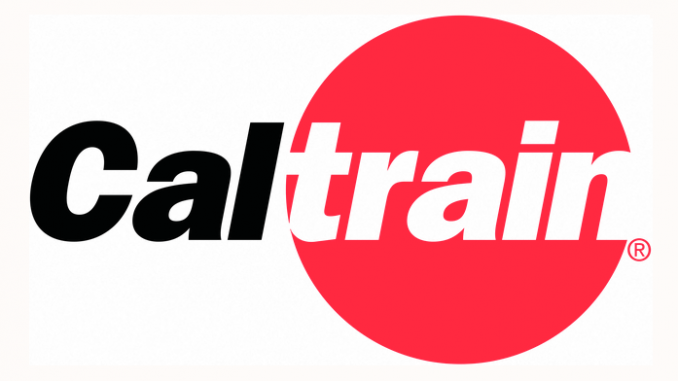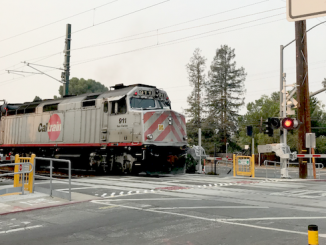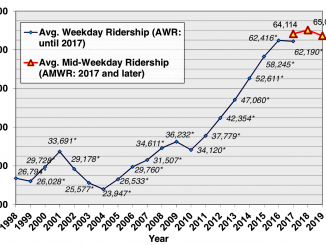
BY EMILY MIBACH
Daily Post Staff Writer
Average weekday ridership on Caltrain fell by 3.6% in February and 1.7% in March compared to the same months last year, according to data from the railroad.
Caltrain’s weekday ridership has been falling since October.
The latest information shows that in February, weekday ridership fell 3.6% to 64,041 passengers.
In March, weekday ridership dropped 1.7% to 65,057 passengers.
Caltrain, like other transit agencies, counts passengers when they board in the morning and when the take the return trip home in the afternoon, so the actual number of people riding the train each day is about half the above numbers or around 32,000 people.
Chief Operating Officer Michelle Bouchard said people likely opted to not take Caltrain this February because of heavy rain.
According to her numbers, there were 16 days with 0.1 inches of rain or more in February of this year, compared to only four days during the same month in 2018.
She also suggests that fewer people took Caltrain in February because of its elimination of the eight-ride tickets. She said that probably led people who usually buy one-way tickets to choose another way to get home.
Bouchard also noted that ridership for BART and Metrolink in Southern California saw ridership decreases.
Caltrain saw a smaller decline in March, with daily riders going from an average of 66,184 during that month in 2018 to 65,057 during the same period in 2019.
Rain again was cited as the main reason for the ridership decrease, with 40% more rain this March than in previous years, according to Bouchard.
She also pointed out that it is possible people took the train less often was because rush-hour trains require some riders to stand.
Caltrain ridership fell in October (-4.3%), November (-5.2%), December (-4.2%) and January (-2.0%) compared to the same month a year earlier.




Looking at these numbers, why are we going to pour billions into these Caltrain capital projects like grade separations? Caltrain has a big problem.
Caltrain, even with the YoY ridership decreases, is over 120% of seated capacity on the way from SJ to SF in the morning, and close to or over 100% in the opposite direction. That means that over 20% of people on the train are standing. More service (longer and more frequent trains) is obviously necessary. Are grade separations urgent? The benefit to Caltrain is less bozos driving onto the train tracks causing delays. The benefit to drivers ought to be evaluated from a traffic study perspective, taking into account nearby intersections as well. Ex: How much of a problem is the Alma and ECR intersection vs the Alma and Caltrain intersection, and will this change if there’s a longer wait at the Caltrain intersection?